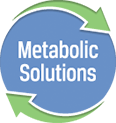Metabolic Solutions offers project design assistance and stable isotope analysis services to help researchers to study glucose kinetics using stable isotope methods. The primed constant infusion of stable isotope labeled glucose has been extensively validated as a reliable approach to quantifying glucose kinetics. This approach is used to explore whole body glucose homeostasis under various perturbations such as exogenous infusions of glucose, insulin or other hormones. Sensitive methods for measuring labeled glucose in plasma permit quantitation with 25-50 µl of plasma.
List of Glucose Kinetic Services
- Hepatic endogenous production
- Glucose disposal rates
- Glucose flux measurements
- Glucose oxidation
- Gluconeogenesis
- Lactate kinetics
Applications
The following examples offer protocols useful for studying various aspects of glucose kinetics.
| Application | Tracer | Reference |
|---|---|---|
| Glucose Kinetics | 6,6-D2-glucose | Effect of IGF-1 on glucose kinetics in healthy adults |
| Euglycemic Clamps | 6,6-D2-glucose | Insulin-stimulated carbohydrate metabolism |
| Glucose Oxidation | [U-13C6]-glucose | Glucose oxidation with moderate intensity exercise |
Newer Techniques for Detecting Glucose Turnover
Metabolic Solutions can determine glucose turnover using a deuterium oxide labeling method. Oral doses of deuterium oxide are administered to subjects. The hydrogens of glucose are labeled during TCA cycle metabolism. Chacko et al. (J Appl Physiol 104:944-951, 2008) have demonstrated that deuterium oxide administration can be used to quantitate gluconeogenesis rates in humans.
More information about our whole body deuterium labeling protocols and stable isotope analysis of many metabolic substrates can be found in our section on Deuteromics.
If you need protocol information on how to conduct glucose metabolism tracer studies, the following technical paper is available: Tracer experiments with glucose.
Examples of Published Glucose Kinetic Studies with Stable Isotope Analysis Performed by Metabolic Solutions
- Teff KL, Rickels MR, Grudziak J, Fuller C, Nguyen HL, and Rickels K. Antipsychotic-induced insulin resistance and postprandial hormonal dysregulation independent of weight gain or psychiartric disease. Diabetes 62(9):3232-40, 2013.“Evaluated glucose disposal in healthy subjects administered antipsychotic medications.”
- Rickels MR, Kong SM, Fuller C, Dalton-Bakes C, Ferguson JF, Reilly MP, Teff KL, and Naji A. Improvement in insulin sensitivity after human islet transplantation for type 1 diabetes. J Clin Endocrinol Metab 98(11):E1780-5, 2013.“Evaluated the effect of islet transplantation on insulin sensitivity in T1D using euglycemic clamps with the isotopic dilution method.”
- Wang CC, Adochio RL, Leitner JW, Abeyta IM, Draznin B, and Cornier MA. Acute effects of different diet compositions on skeletal muscle insulin signaling in obese individuals during caloric restriction. Metabolism 62(4):595-603, 2013.“Insulin sensitivity with a euglycemic clamp was investigated with different diet compositions in obese individuals.”
- Adochio RL, Leitner JW, Gray K, Draznin B, and Cornier MA. Early responses of insulin signaling to high-carbohydrate and high-fat overfeeding. Nutr Metab 6:37, 2009.“Used a hyperinsulinemic –euglycemic clamp technique to evaluate metabolic adaptation to either a high-carbohydrate or high-fat overfeeding in lean individuals.”
- Chandramouli, V., Ekber, K., Schumann, W.C., Kalhan, S.C., Wahren, J., Landau, B.R. Quantifying gluconeogenesis during fasting. Am. J. Physiol. 273(36):E1209-E1215, 1997.“The use of 2H2O in estimating gluconeogenesis’ contribution to glucose production (%GNG) was examined during progressive fasting in three groups of healthy subjects.”
- Landau, B.R., Wahren, J., Chandramouli, V., Schumann, W.C., Ekberg, K., Kalhan, S.C. Use of 2H2O for Estimating rates of Gluconeogenesis. J. Clin. Invest. 95: 272-178, 1995.“A method is introduced for estimating the contribution of gluconeogenesis to glucose production. 2H2O is administered orally to achieve 0.5% deuterium enrichment in body water.”
- Phillips, S.M., H.J. Green, M.A., Tarnopolsky, and S.M. Grant. Decreased glucose turnover after short-term training is unaccompanied by changes in muscle oxidative potential. Am J Physiol. 269(32):E222-E230, 1995.“This study investigated the hypothesis that training-induced reduction in exercise blood glucose utilization can occur independently of increases in muscle mitochondrial potential.”


